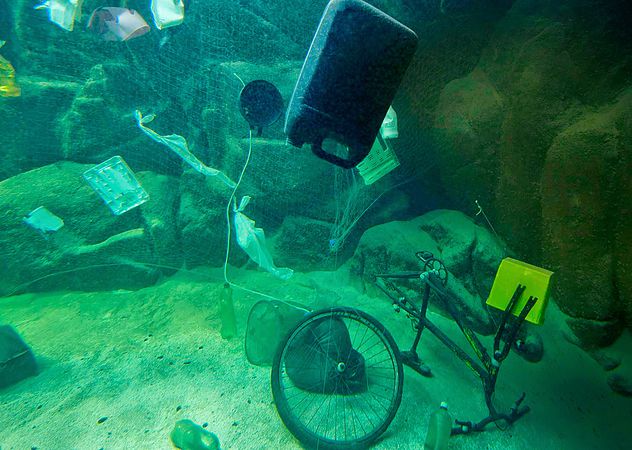When thinking of plastic the words that often come to mind are dirty, garbage, and gross. When thinking of the word art the words that come to mind are beautiful, moving, and thought-provoking. So how can these two opposite things come together cohesively? Daniel Webb manages to do just that. Daniel is an 36 year old artist that was born and raised on the Southeast coast of England. One day while he was on the beach, he saw seaweed wrapped in plastic. He began to think if the plastic on this beach once belonged to him. This sparked Webb to start his plastic journey.

Daniel Webb states that recycling was not easily accessible to him. He would have to take his recycling to a facility, rather than them picking it up. Webb decided to keep all of the plastic he used for a whole year. Webb began his journey on January 1, 2017 and by New Years Eve he had collected over 22,80 litres of plastic, or 4,490 items of plastic. He washed every piece of plastic and stored it in his home. With this plastic, he created a mural called, “Everyday Plastic”.
The most common items Daniel Webb accumulated were hygiene, food packaging, and cleaning products. These items are all used almost everyday. 


While researching different types of art made of plastic, something about Daniel Webb’s stuck out to me. Most of the other artists I looked at, collected trash from other areas rather than use their own. Webb used his own plastic and it was very moving to me. It shows that he is not perfect, and that you don’t have to be either. The purpose of this mural is to represent the overproduction and overconsumption of plastic. Daniel Webb believes that recycling will not do much when there is this much plastic being produced every second. He describes plastic production as an “epidemic”.
This journey was not easy for him, it took extreme willpower to not just throw the trash away. He was extremely transparent, which made the art more enticing to me. He isn’t judgemental about not fully being plastic free, he goes into detail about how hard being 100% plastic free is. Being plastic free is almost impossible in today’s way of life. Everything from food to hygiene to shoes are wrapped in plastic. It’s not about being perfect, it’s about trying your hardest.

This mural is currently on display at Dreamland, which is located in a seaside town in England where Webb currently resides. You are able to get close to the mural and see what each piece is made of. This piece has moved me more than I thought it would have. I am beyond excited to see what else Daniel Webb will produce!






